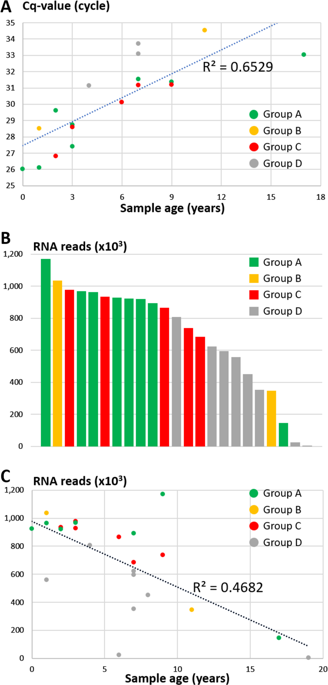当前位置:
X-MOL 学术
›
Modern Pathol.
›
论文详情
Our official English website, www.x-mol.net, welcomes your
feedback! (Note: you will need to create a separate account there.)
Frequent overexpression of klotho in fusion-negative phosphaturic mesenchymal tumors with tumorigenic implications.
Modern Pathology ( IF 7.1 ) Pub Date : 2019-12-02 , DOI: 10.1038/s41379-019-0416-4 Cheng-Han Lee,Sheng-Yao Su,Kesavan Sittampalam,Paul Chih-Hsueh Chen,Fredrik Petersson,Yu-Chien Kao,Thomas O Carpenter,Tsung-Han Hsieh,Eiichi Konishi,Jen-Wei Tsai,Steven D Billings,Andrew L Folpe,Jen-Chieh Lee
Modern Pathology ( IF 7.1 ) Pub Date : 2019-12-02 , DOI: 10.1038/s41379-019-0416-4 Cheng-Han Lee,Sheng-Yao Su,Kesavan Sittampalam,Paul Chih-Hsueh Chen,Fredrik Petersson,Yu-Chien Kao,Thomas O Carpenter,Tsung-Han Hsieh,Eiichi Konishi,Jen-Wei Tsai,Steven D Billings,Andrew L Folpe,Jen-Chieh Lee

|
Phosphaturic mesenchymal tumors (PMT) are tumors that cause hypophosphatemia/osteomalacia chiefly by secreting FGF23. We have identified FN1-FGFR1/FGF1 fusion genes in nearly half of PMT, suggesting a central role of FGFR1 pathways in the pathogenesis of PMT. Tumorigenic drivers are unknown for tumors where previous study detected neither fusion, including many in bone, where FISH failed because of tissue decalcification. To identify alternative fusions in PMT without known fusions, as well as to validate the positive FISH results and characterize the fusion junctions, 34 PMT were studied, including 12 with known FN1-FGFR1 fusion by FISH (Group A), 2 with FN1-FGF1 (B), 12 with neither fusion (C), and 8 with previous acid-based decalcification and hence unknown fusion status (D). In total, 23 archival samples were subjected to anchored multiplex PCR-based RNA-sequencing (AMP-seq) with primers targeting FN1, genes encoding the FGF/FGFR families, and KL (α-Klotho); five Group C cases were also studied with whole-transcriptomic and exome-captured RNA sequencing, respectively. The AMP-seq results were consistent with previous FISH and/or transcriptomic sequencing data, except in one old Group A sample. One case had a novel FGFR1 exon 9 breakpoint, confirmed by genomic DNA sequencing. One Group D bone tumor was found to harbor FN1-FGF1. All 3 RNA-sequencing platforms failed to identify convincing fusion genes in Group C (N = 10), which instead expressed significantly higher levels of either KL or KLB. This result was further confirmed with KL and KLB RNA CISH semi-quantification (RNAscope). Our results demonstrated the utility of AMP-seq, which was compromised by decalcification and prolonged archiving. Of potential importance, fusion-negative PMT frequently overexpressed α-Klotho (or instead β-Klotho less commonly), whose role as an obligatory co-receptor for FGF23-FGFR1 binding suggests its aberrant expression in osteocytes/osteoblasts might result in an FGF23-FGFR1 autocrine loop that in turn drives the overexpression of FGF23 and tumorigenesis through activated FGFR pathways.
中文翻译:

klotho 在具有致瘤意义的融合阴性磷酸盐尿性间充质肿瘤中的频繁过度表达。
磷酸盐尿性间充质肿瘤 (PMT) 是主要通过分泌 FGF23 引起低磷酸盐血症/骨软化症的肿瘤。我们已经在将近一半的 PMT 中鉴定出 FN1-FGFR1/FGF1 融合基因,表明 FGFR1 通路在 PMT 的发病机制中起着核心作用。对于之前的研究未检测到融合的肿瘤,包括许多骨中的融合,肿瘤的致瘤驱动因素是未知的,其中 FISH 由于组织脱钙而失败。为了识别 PMT 中没有已知融合的替代融合,以及验证阳性 FISH 结果和表征融合连接,研究了 34 个 PMT,包括 12 个与 FISH 已知的 FN1-FGFR1 融合(A 组),2 个与 FN1-FGF1 (B)、12 例均未融合 (C)、8 例既往有酸基脱钙,因此融合状态未知 (D)。总共,对 23 个存档样本进行基于锚定多重 PCR 的 RNA 测序 (AMP-seq),引物靶向 FN1、编码 FGF/FGFR 家族的基因和 KL (α-Klotho);还分别对 5 个 C 组病例进行了全转录组学和外显子组捕获 RNA 测序研究。除了一个旧的 A 组样本外,AMP-seq 结果与之前的 FISH 和/或转录组测序数据一致。一个病例有一个新的 FGFR1 外显子 9 断点,经基因组 DNA 测序证实。一个 D 组骨肿瘤被发现含有 FN1-FGF1。所有 3 个 RNA 测序平台都未能在 C 组(N = 10)中识别出令人信服的融合基因,而是表达了显着更高水平的 KL 或 KLB。KL 和 KLB RNA CISH 半定量 (RNAscope) 进一步证实了这一结果。我们的结果证明了 AMP-seq 的实用性,它因脱钙和长期存档而受到损害。具有潜在重要性的是,融合阴性 PMT 经常过度表达 α-Klotho(或不太常见的是 β-Klotho),其作为 FGF23-FGFR1 结合的强制性共同受体的作用表明其在骨细胞/成骨细胞中的异常表达可能导致 FGF23- FGFR1 自分泌环反过来通过激活的 FGFR 通路驱动 FGF23 的过度表达和肿瘤发生。
更新日期:2019-12-02
中文翻译:

klotho 在具有致瘤意义的融合阴性磷酸盐尿性间充质肿瘤中的频繁过度表达。
磷酸盐尿性间充质肿瘤 (PMT) 是主要通过分泌 FGF23 引起低磷酸盐血症/骨软化症的肿瘤。我们已经在将近一半的 PMT 中鉴定出 FN1-FGFR1/FGF1 融合基因,表明 FGFR1 通路在 PMT 的发病机制中起着核心作用。对于之前的研究未检测到融合的肿瘤,包括许多骨中的融合,肿瘤的致瘤驱动因素是未知的,其中 FISH 由于组织脱钙而失败。为了识别 PMT 中没有已知融合的替代融合,以及验证阳性 FISH 结果和表征融合连接,研究了 34 个 PMT,包括 12 个与 FISH 已知的 FN1-FGFR1 融合(A 组),2 个与 FN1-FGF1 (B)、12 例均未融合 (C)、8 例既往有酸基脱钙,因此融合状态未知 (D)。总共,对 23 个存档样本进行基于锚定多重 PCR 的 RNA 测序 (AMP-seq),引物靶向 FN1、编码 FGF/FGFR 家族的基因和 KL (α-Klotho);还分别对 5 个 C 组病例进行了全转录组学和外显子组捕获 RNA 测序研究。除了一个旧的 A 组样本外,AMP-seq 结果与之前的 FISH 和/或转录组测序数据一致。一个病例有一个新的 FGFR1 外显子 9 断点,经基因组 DNA 测序证实。一个 D 组骨肿瘤被发现含有 FN1-FGF1。所有 3 个 RNA 测序平台都未能在 C 组(N = 10)中识别出令人信服的融合基因,而是表达了显着更高水平的 KL 或 KLB。KL 和 KLB RNA CISH 半定量 (RNAscope) 进一步证实了这一结果。我们的结果证明了 AMP-seq 的实用性,它因脱钙和长期存档而受到损害。具有潜在重要性的是,融合阴性 PMT 经常过度表达 α-Klotho(或不太常见的是 β-Klotho),其作为 FGF23-FGFR1 结合的强制性共同受体的作用表明其在骨细胞/成骨细胞中的异常表达可能导致 FGF23- FGFR1 自分泌环反过来通过激活的 FGFR 通路驱动 FGF23 的过度表达和肿瘤发生。











































 京公网安备 11010802027423号
京公网安备 11010802027423号